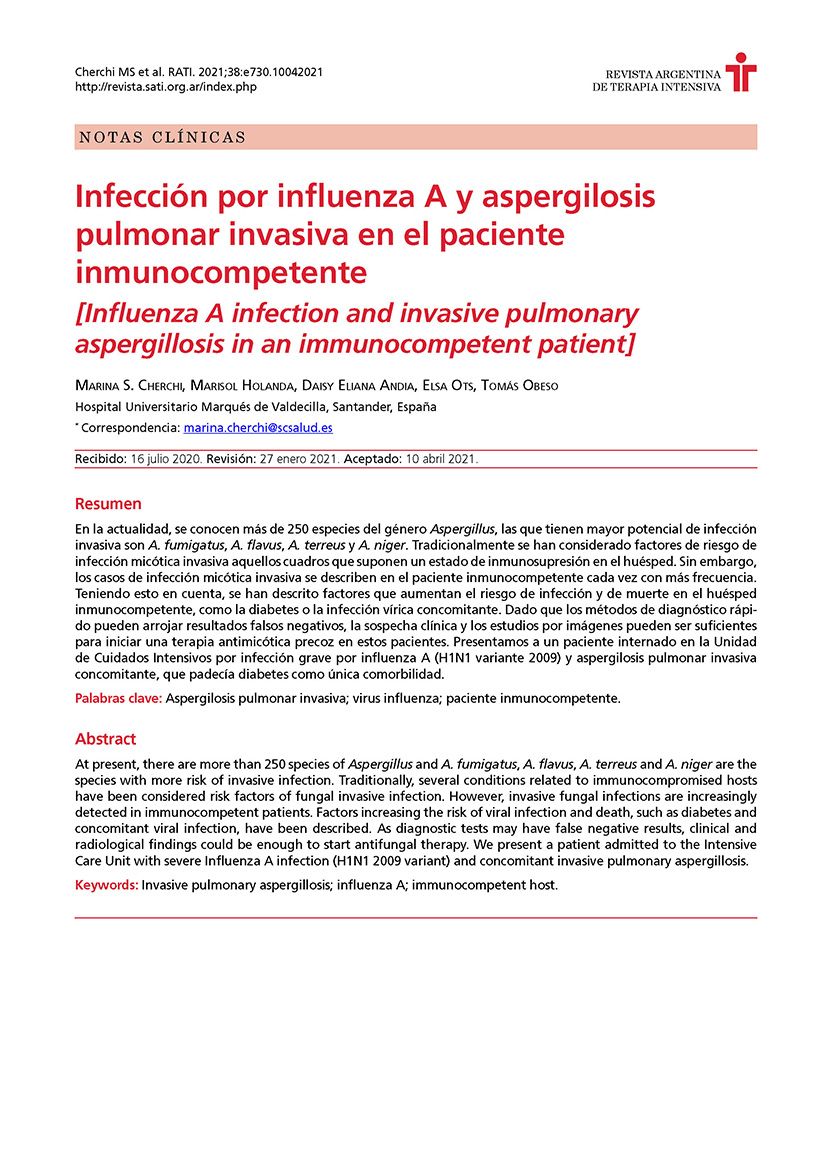Resumen
El género Aspergillus fue reconocido por primera vez en 1729 por Micheli, en Florencia1. Actualmente, gracias al avance de las técnicas de caracterización molecular, se conocen más de 250 especies de Aspergillus, siendo las de mayor potencial de infección invasiva A. fumigatus, A. flavus, A. terreus y A. niger1.Tradicionalmente se han considerado factores de riesgo de infección fúngica invasiva todas aquellas condiciones que suponen un estado de inmunosupresión en el huésped como neutropenia prolongada, trasplante, inmunodeficiencia congénita, tratamiento inmunosupresor o esteroideo, tumores hematológicos y enfermedad injerto contra huésped2,3. Sin embargo, se describen cada vez con más frecuencia casos de infección fúngica invasiva en pacientes inmunocompetentes4-8. Presentamos el caso de un paciente ingresado en UCI por infección grave por Influenza A (H1N1 variante 2009) y aspergilosis pulmonar invasiva (API) concomitante.
La revista no retiene los derechos de reproducción (copyright) por lo que los autores pueden volver a publicar sus trabajos con la sola mención a la fuente original de publicación.

